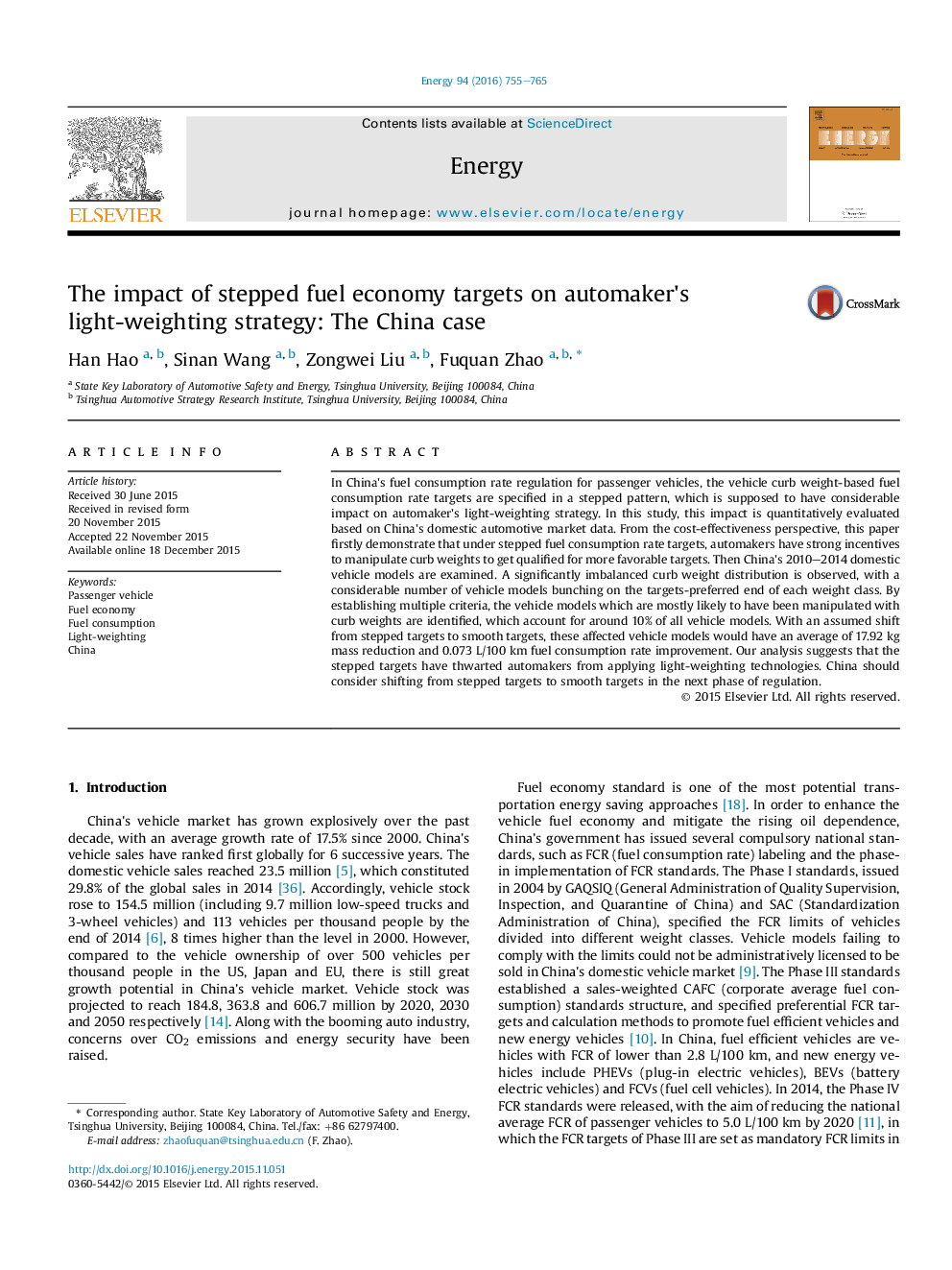| Article ID | Journal | Published Year | Pages | File Type |
|---|---|---|---|---|
| 1731229 | Energy | 2016 | 11 Pages |
Abstract
In China's fuel consumption rate regulation for passenger vehicles, the vehicle curb weight-based fuel consumption rate targets are specified in a stepped pattern, which is supposed to have considerable impact on automaker's light-weighting strategy. In this study, this impact is quantitatively evaluated based on China's domestic automotive market data. From the cost-effectiveness perspective, this paper firstly demonstrate that under stepped fuel consumption rate targets, automakers have strong incentives to manipulate curb weights to get qualified for more favorable targets. Then China's 2010-2014 domestic vehicle models are examined. A significantly imbalanced curb weight distribution is observed, with a considerable number of vehicle models bunching on the targets-preferred end of each weight class. By establishing multiple criteria, the vehicle models which are mostly likely to have been manipulated with curb weights are identified, which account for around 10% of all vehicle models. With an assumed shift from stepped targets to smooth targets, these affected vehicle models would have an average of 17.92Â kg mass reduction and 0.073Â L/100Â km fuel consumption rate improvement. Our analysis suggests that the stepped targets have thwarted automakers from applying light-weighting technologies. China should consider shifting from stepped targets to smooth targets in the next phase of regulation.
Related Topics
Physical Sciences and Engineering
Energy
Energy (General)
Authors
Han Hao, Sinan Wang, Zongwei Liu, Fuquan Zhao,
